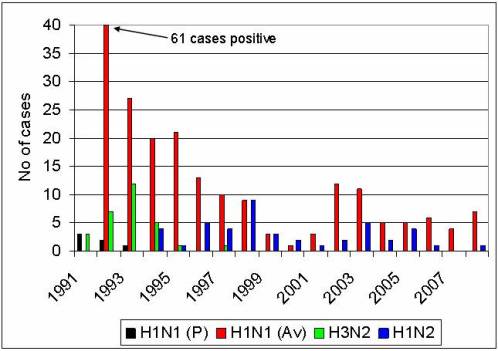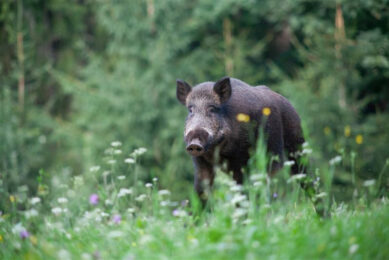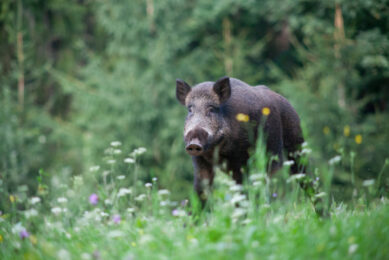Swine influenza outbreaks – what can we expect?

As the human pandemic is developing, the novel influenza A H1N1virus is now being reported in many countries and most continents around the world in pigs. What can we expect?
The Southern Hemisphere is recovering from their seasonal influenza outbreaks and the predominant strain, according to WHO charts, showed that the novel H1N1 virus caused over 90% of cases in man. We can expect similar results in the Northern Hemisphere over our winter months.
As these cases develop, we can expect more reports of man to pig spread of the infection, as we have just heard in N. Ireland (Borobia, 2009). A small breeder-weaner farm subsequently broke down with confirmed novel H1N1, following the family having a ‘mild’ respiratory infection. The virus spread throughout the sows and piglets, giving a comparatively minor ‘flu-like’ illness, 60% morbidity, raised temperatures, harsh coughing but appetite remained quite good. A few older piglets died in one litter and showed strongly demarcated pneumonic lesions, samples of which subsequently confirmed the presence of novel H1N1 by reverse transcription PCR. The infection was over within two weeks.
Once influenza becomes more established in the national pig herd, we can expect the more typical pattern of spread from pig to pig, as the epidemic develops. Spread is thought to be most common by the introduction of infected pigs on to a unit, but it can also be spread by aerosol over short distances.
How long the epidemic will last and how endemic this H1N1 strain will become is still the subject of speculation. An excellent review of past epidemics was recently described by Irvine and Brown (2009) from 1991, showing the variations in strain and adaptation of the different strains in Great Britain (see Figure 1).
Figure 1. Swine influenza virus isolation patterns in GB from 1991-2008
The porcine or swine H1N1 was replaced by the Avian derived H1N1 in 1991, and subsequently disappeared from pigs in the UK and Europe. This new strain became very dominant and survives even today. H3N2 (also human derived) arrived at this time but appeared to have a much more minor effect and has disappeared in the UK but is still present in the rest of Europe and Asia. There was a reassortment between human H3N2 and Human–like H1N1 viruses to produce the H1N2 virus, which has become endemic also now in pigs in Europe since 1995.©
What can we expect in the future with this virus? Will it replace the existing viruses or will it fade out once the majority of herds have been infected? It appears to be well adapted in man and increasingly as well in pigs. Serologically, there is some cross reaction to the current avian H1N1 test, which is still circulating, but whether it will prove dominant, unfortunately, is still a matter for conjecture.











